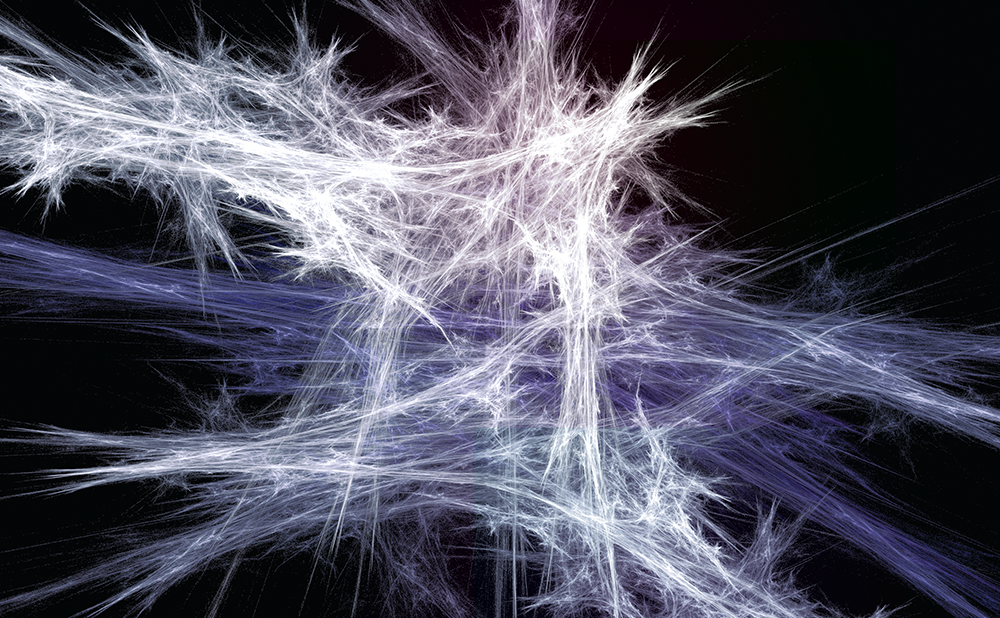Surgery
Childhood OSA is typically recognized between two and eight years of age when the tonsils and adenoids are the largest in relation to the underlying airway size.2 Adenotonsillar hypertrophy in the presence of a narrow airway and/or decreased oropharyngeal muscle tone is considered the most common cause of OSA in children. Therefore, adenotonsillectomy (TNA) is considered first-line therapy for OSA in children. In fact, OSA currently exceeds recurrent tonsillitis as the leading indication for pediatric TNA in the US.3
However, it is important to mention that when evaluating a child suspected of having sleep-disordered breathing a multidisciplinary approach involving a sleep specialist, otolaryngologist, maxillofacial surgeon, and orthodontist should be utilized. Children with OSA often have enlarged tonsillar and adenoid tissue in the setting of an already narrowed or floppy airway. Therefore, even though TNA has a high initial success rate for improving OSA and associated symptoms of OSA, if not curative it may do little to affect craniofacial development in the long term, and the child remains at risk for worsening OSA in adulthood. The multidisciplinary approach assures a comprehensive plan to address all aspects of the child’s orofacial anatomy and positively affects craniofacial and upper airway development in a child at risk for OSA in adolescence or adulthood.
Understandably, parents may be reluctant to subject their child to surgeries or procedures that require general anesthesia or sedation and that cause pain or discomfort. However, if parents understand the implications of untreated OSA, appreciate the imperative nature of correcting abnormalities within a developmental window when upper airway and jaw development can be maximally influenced, and are approached with a comprehensive stepwise plan from the beginning, they are more likely to accept the idea of surgery, repeated polysomnographs (PSGs), and additional interventions as needed.
A controversial matter is how early to perform this surgery. Most agree that TNA can be performed successfully and without complications after 24 months of age. However, OSA can occur as early as three weeks of age, and TNA has been performed as early as six months.4
When performing TNA in children with OSA, it is advisable to maximize the size of the upper airway and prevent collapse of the soft palate and lateral pharyngeal walls. Techniques such as suturing the tonsillar wound to reduce collapsibility of the pharynx and to prevent scarring and narrowing of the posterior pharynx are used in adults, but are often neglected in children with OSA. Again, enlarged tonsils and adenoids are not always sufficient to cause OSA in children. These children often have coexisting narrow upper airways from either redundant soft tissue or maxillomandibular deficiency. Therefore, the same procedure of complete tonsillar and adenoid removal with wound suturing to maximize the airway is recommended not only in adults but also in the treatment of pediatric OSA. TNA is considered highly effective for treating OSA. PSG parameters improve after TNA in approximately 75–100% of children5,6 and OSA is reportedly cured in 60–80% of cases,7 although the definition of cure varies somewhat between studies. Behavioral and health consequences of OSA also improve starting as early as one month post-operatively. The majority of children experience improvement in growth,8 quality of life,9 behavior,10 right ventricular function,11 neurocognitive function,12 and school grades.13 Children experiencing other sleep-related disturbances such as night terrors, sleepwalking, or nocturnal enuresis also improve after TNA.14,15
However, considering the number of TNAs performed each year, this still leaves a large number of post-operative children with residual OSA. There is a paucity of data to predict surgical success or failure, therefore, a postoperative PSG is encouraged in all patients six weeks to three months after surgery, particularly in children in whom there is a high likelihood of residual OSA, such as in cases of a narrow mandible or maxilla, obesity, neuromuscular disorder, trisomy,21 or craniofacial abnormalities.
Other surgical procedures that may be considered at the time of or after TNA to optimize nasal breathing include turbinectomy or septoplasty. Radiofrequency of the inferior nasal turbinates is an office procedure that may be simple to perform under local anesthesia in older children, but may be more difficult in younger children, who are more likely to require heavy sedation. Uvulopalatopharyngoplasty (UPPP) is not commonly performed in children because of its questionable efficacy and its significant complications such as nasopharyngeal stenosis, palatal incompetence, and speech difficulties.16 Tongue-reduction surgery is often performed in cases of macroglossia, as occurs with Beckwith-Wiedemann and Down syndromes.17 Maxillomandibular advancement (MMA), which ‘pulls forward’ the anterior pharyngeal tissues attached to the maxilla, mandible, and hyoid to enlarge the entire velo-orohypopharynx, is the most effective surgical treatment for OSA in adults (excluding tracheostomy, which completely bypasses all upper airway obstructions).18 However, as with most of the surgeries previously mentioned, few studies have investigated its utility and efficacy in children with OSA.19 As it is major surgery, it should be considered primarily in refractory OSA, and be performed (after appropriate orthodontic treatment) only by surgeons experienced in the procedure for the indication of OSA. It may be performed at any age, but is generally performed in the pediatric population after 11 or 12 years of age.20
The risks and benefits of TNA or other surgery in children with OSA must always be considered. The most common peri-operative complication of TNA is bleeding.21 Morbidly obese children undergoing TNA may be considered at a higher risk of post-operative respiratory compromise, requiring interventions in the form of supplemental oxygen, aggressive suctioning, and continuous positive airway therapy (CPAP).22 The risk of reintubation has not been commonly reported in the pediatric population. Orthodontic Therapy
Rapid maxillary distraction in conjunction with TNA has shown to be successful in treating children with OSA and maxillary contraction (higharched palate and unilateral or bilateral crossbite).23 Rapid maxillary distraction requires an orthodontic device anchored to two upper molars on each side of the jaw, which applies daily pressure causing each half of the maxilla to grow apart. Bone grows into the spaces bordering the midline cartilage. This technique aims to expand the hard palate laterally, raise the soft palate, and widen the nasal passage. This provides more space for the tongue and prevents it from falling posterior and occluding the oropharynx during sleep. Rapid maxillary distraction needs to occur before the cartilage becomes bone, and is therefore most often performed between the ages of five and 11. Slow maxillary distraction is based on the same principles of rapid expansion, and optimizes widening at the different growth periods during pre-puberty. However, the optimal age for these procedures is unknown and few studies suggest that early intervention—that is, before the pubertal peak of skeletal growth—results in greater short-term increases in the width of nasal cavities and long-term increases in maxillary skeletal width, intermolar width, and lateronasal width.24 Rapid maxillary distraction may result in some distraction of the mandible as well, but because no midline cartilage is present there is very limited widening. For mandibular manipulation, mandibular repositioning splints and other dental appliances can also be used as a noninvasive form of therapy. Splints are most successful in the treatment of patients with mild to moderate OSA who have a retrolingual component. Complications of the mandibular repositioning splint include temporomandibular joint problems or a change in occlusion over time, necessitating orthodontic treatment.
Orthognathic surgery, or mandibular distraction osteogenesis, may be required if noninvasive orthodontic procedures cannot achieve sufficient mandibular widening. The procedure is performed by a surgeon in close communication with the orthodontist. The concept of mandibular distraction osteogenesis is very similar to that of rapid maxillary distraction, except that the surgeon uses a saw to create osteotomies in the mandible where either an internal (intraoral) device or an external device is used to expand the bones. Patients accept internal devices more easily than external ones, but the former are difficult to use in patients with small bones. External devices offer flexibility and vector selection, but often cause scarring of the skin. Widening of 12–14mm can be obtained easily in three weeks. This approach is normally postponed until 10–13 years of age, and by 12–13 years of age both rapid maxillary distraction and mandibular distraction osteogenesis can be performed simultaneously.
Continuous Positive Airway Pressure
TNA most often represents the first line of treatment for pediatric OSA, with CPAP reserved for patients in whom surgery was not successful or those in whom surgery is contraindicated. In many cases, it may also provide an interim solution if surgery cannot be performed in a timely manner. CPAP is very effective in improving symptoms and PSG parameters in both infants and children.25,26 The first report of its usefulness in children was in 1986, where five children aged 3–11 on CPAP were followed prospectively for 10 months.27 Since then, many studies have confirmed the effectiveness of CPAP therapy in children. Bilevel positive airway pressure is used instead in children with OSA and hypoventilation from coexisting neuromuscular or musculoskeletal disease.Home CPAP or bilevel positive pressure requires careful, in-laboratory titration and regular follow-up to adjust both pressure and mask size for the growing infant or child.25 It is generally recommended that young children, because of their rapid craniofacial growth, be evaluated by a sleep specialist every six months. In addition, they are recommended to have annual visits with a craniofacial specialist to make sure that the headgear and mask are not causing mid-face hypoplasia.28
The complications of CPAP or bilevel positive pressure use are usually minor and related to poor mask fit. They include skin rash, eye irritation, pressure ulcers, nasal congestion, or rhinorrhea. Most of these complications can be avoided or treated by proper mask fit. Heated humidification and inhaled nasal corticosteroids can alleviate most of the nasal complaints. Very few children experience induced central sleep apneas as a result of CPAP or bilevel positive pressure use. In these cases, bilevel ventilation with a backup rate will usually resolve the problem. The most serious potential complications of positive airway pressure use are pneumothorax and reduction in cardiac output, neither of which has been reported in children being treated for OSA.
Often the most difficult aspect of CPAP or bilevel positive pressure use is compliance. Compliance to CPAP—that is, use of the machine for at least 50% of the prescribed sleep time—has been estimated to be as low as 50%, with adolescents being the least compliant age group.29 Careful training and close supervision by the sleep physician can increase compliance rates in children. In developmentally delayed children, intensive behavioral modification techniques including modeling, parent training, and desensitization can improve compliance to CPAP or bilevel positive pressure therapy.30 Aggressive management of the minor side effects also helps with compliance to positive pressure therapy.












